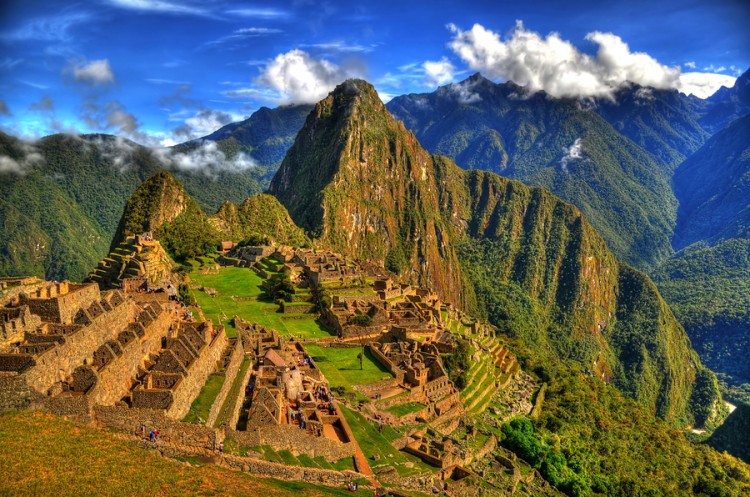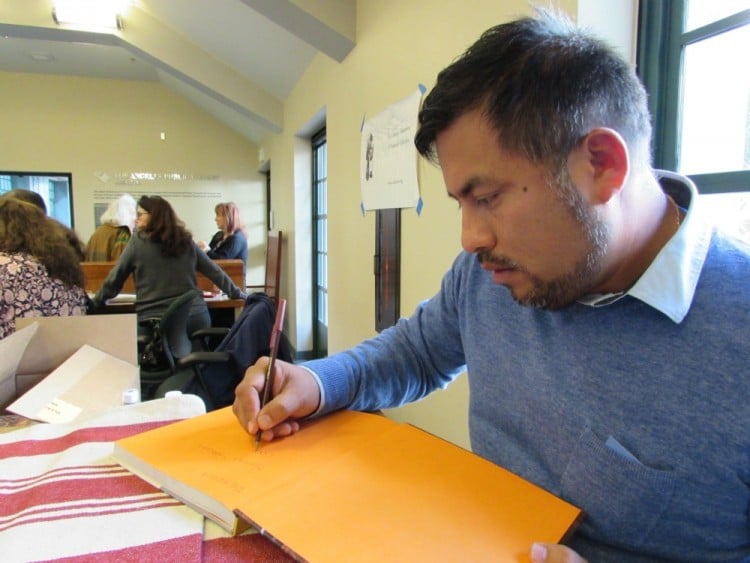Peruvian cuisine is a 5,000-year fusion of Native Indian, Spanish, African, Italian, French, Moroccan, Chinese, Japanese and Polynesian cultures and flavors. The empires of the Moche that flourished in the Northern coasts and valleys of Peru during the 2nd– 8th centuries and the Inca who dwelled in northern and central South America from the 13th century built their civilizations around food.
Francisco Pizarro and his crew arrived in 1528 on their way to Asia to look for spices and found an exciting array of exotic ingredients. He and his brothers came back in 1532 and conquered the Inca Empire. Three years later he founded the capital city of Lima. The Viceroyalty of Peru (Spanish colony) was created in 1542. The colonists brought olive oil, meat, cheese, garlic, fruits, spices, and herbs including cilantro into the country.
They also came with African slaves who worked as house servers. The slaves were fed offal. (organ meats, ears, feet, and innards) They introduced methods for grilling meats and poultry (including organs) in tangy sauces. Anticuchos de Corazon (beef heart skewers marinated with spices and smoky chilies) is a popular Peruvian “street food” that was handed down by descendants of the slaves.
After slavery was abolished in the 1850’s, Peru opened up its borders to immigrants. A large number of Chinese arrived from Canton to work in sugar and cotton plantations. They brought soy and ginger. which added a distinct Asian element to Peruvian cuisine. Other arrivals included French, Italian, Japanese, Arabic, and British who settled and contributed to the culinary mix.
Ricardo Zarate’s book (written with the help of Jenn Garbee) “The Fire of Peru: Recipes and Stories from My Peruvian Kitchen” is a beautifully designed and colorful treatise of Peruvian cuisine past and present. Zarate is a Peruvian-born chef, restaurateur, and author who lives in Los Angeles. He spoke at a meeting I attended for the Culinary Historians of Southern California and told stories detailing the origin of Peruvian cuisine, how it’s evolved.
Zarate has been recognized by Food & Wine, Esquire GQ, Condé Nast Traveler and was a three-time James Beard nominee. Admirers call him “the Godfather of Peruvian Dishes.” He grew up poor in a cement house with a tin roof in Lima and was #11 out of 13 children. Nine of his siblings are half-Chinese. It was a hard existence with the constant threat of terrorism in the 70s and 80s.
Most Americans were unaware during that time that two groups, The Shining Path, and Tupac Amaru, were blowing up houses and buildings with innocent people inside. Peru has changed for the better over the years and tourism is now its most rapidly growing industry. It also boasts 2 of the top restaurants in the world. (Central in Lima, Astrid y Gaston, Lima)
All of Zarate’s siblings have become successful despite the obstacles they faced. Their mantra was, “Poor doesn’t have to be dirty.” Zarate says, “Peruvians do not like handouts. They prefer exchanges.” As a teen, he sold food on the streets, in popups and worked as a caterer. His family members helped him travel to London where he worked in restaurants for 13 years. His first job there was at Benihana where he started as a dishwasher and worked his way up to Hibachi chef.
Peruvian Cuisine has the best ingredients in the world
Did you know that potatoes originated in Peru? The country has over 3,000 varieties, including sweet potatoes. The Spaniards brought them back to Europe, where they became a staple in Ireland.
Tomatoes were also first cultivated in the Andes Mountains of Peru, Bolivia, Chile, and Ecuador. Can you imagine Italian food without tomato sauce?
Quinoa, known as “the mother grain” comes from the Andes. It’s become a trendy and highly touted “health” food in America.
Maca is a root vegetable from the Andes that’s made into a powder and is sometimes used as a substitute for chocolate.
Camu Camu is a low-growing shrub that grows in the Amazon jungle of Peru. It produces a red/purple cherry-like fruit and is stronger in acidity than Kiwi. It’s also considered to be a superfood.
Traditional Peruvian Recipes
Seco de Cordero is a Peruvian dish that has a Moroccan influence. It’s a lamb stew with spices like cumin and cilantro.
Aji de Gallina is a shredded chicken stew and one of the most traditional dishes in Peru. It’s made with old bread soaked in milk.
Arroz Chaufa is a Peruvian fried rice dish that’s a mix of Peruvian and Chinese cuisines. Chinese-influenced cuisine in Peru is called Chifa.
Ceviche –The natives of the Peruvian Coast ate an ancient dish of raw fish and seaweed or tumbo (a type of Passion Fruit). Moorish women who were taken in the war when the Catholic Spanish Kings conquered Granada arrived in Peru with Pizarro’s soldiers. They brought bitter oranges and limes that were used to marinate the raw fish which is now known as Ceviche.
In the 1970s Japanese chefs in Lima began experimenting with ceviche. They showed Peruvian chefs how to treat, eat and cut fish and opened ceviche rias throughout Peru. Ceviche is only served in the daytime in Peru because at night Peruvians feel that the fish is too old. It’s enjoyed widely in most Latin American countries including Mexico.
Leche de Tigre – Tiger’s milk is used as the marinade for ceviche and other dishes. It’s made of lime juice, sliced onion, chilies, salt, and pepper.
Tiradito is the Peruvian version of sashimi. It’s sliced raw fish that’s been seared on hot stones.
Ocopa is a traditional sauce in Peru made with peanuts, chili, milk and cheese.
Pachamanca – is a traditional Peruvian dish of lamb, mutton, pork or chicken cooked in the ground with hot stones and marinated with spices. The indigenous Indians in Peru sometimes cook up guinea pigs. Chef Zarate says he only considers them to be family pets. The Aborigines in New Zealand and Australia cook meat in a similar way. Polynesians navigated to South America and settled in Peru, which may explain that connection.
Plantains – came to Latin America and the Caribbean from Africa with the slaves. They are banana-like and tasty when fried.
Lúcuma – a fruit that’s considered to be a superfood and is made into delicious non-dairy ice cream. It’s also used for cakes, drinks, and other desserts.
A typical Peruvian breakfast may include a Chicharron sandwich, (deep fried pork, sweet potatoes, onions, and chili peppers) tamale, bread, eggs, cheese, tea soup (tea, milk, bread, butter, and sugar with cinnamon and powdered cloves) ceviche, or Sopaipilla (leavened wheat dough made with eggs, shortening or butter, cut into triangles and deep fried) Breakfast is served with a cup of black Peruvian coffee.
Peruvian cuisine is derived from 3 elements
The first is geography.
Peru is divided into 3 regions:
Costa – the coastal desert
Sierra – the Andes Mountains,
Selva – the Amazon rainforest, which has an extraordinary amount of exotic fruits and vegetables. Many are also used for healing.
The 3 regions comprise 98% of the world’s micro-climates.
The second element is Ethnicity.
As mentioned above, Peruvian cuisine is a blend of cultures.
The third element is Flexibility.
The people of Peru have the ability to pull it all together.
Chef Zarate previously owned Picca, Mo-Chica, and Paiche restaurants in Los Angeles.
Purchase Zarate’s book “The Fire of Peru” on Amazon by clicking here.







Very Cool! Thanks for sharing all of this with us Rebecca! I know nothing about Peru, but I did visit Ecuador a few years ago. Fascinating!
Thanks Laura,
I bet Ecuador was fascinating as well. I’d love to travel to South America one of these days.
Rebecca